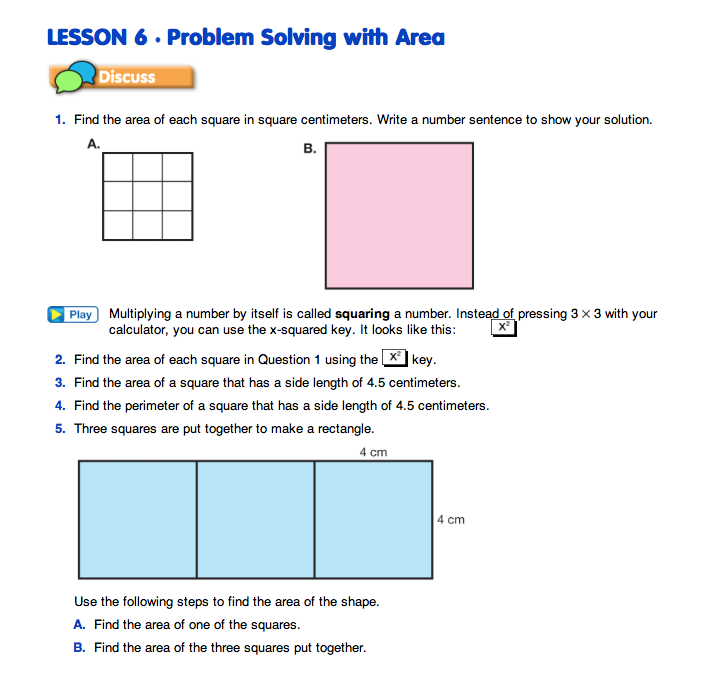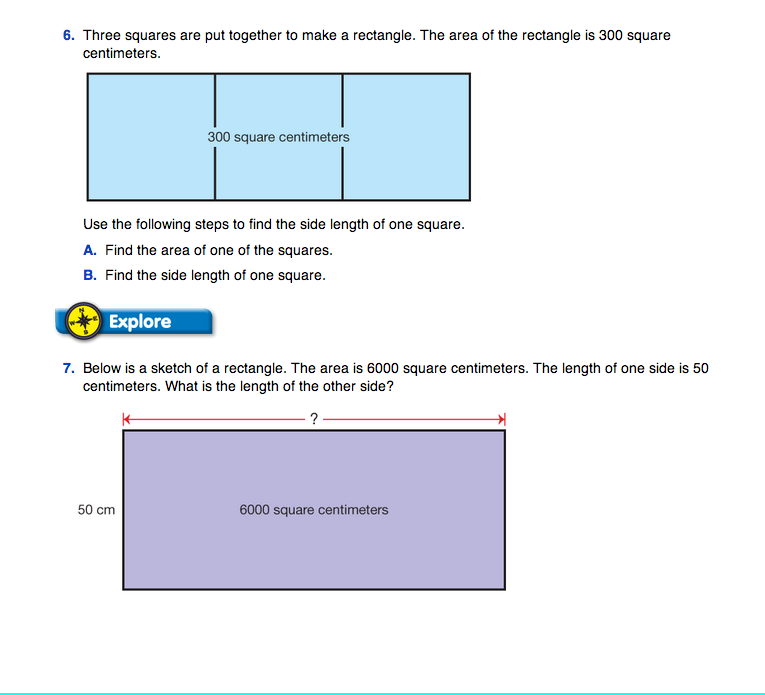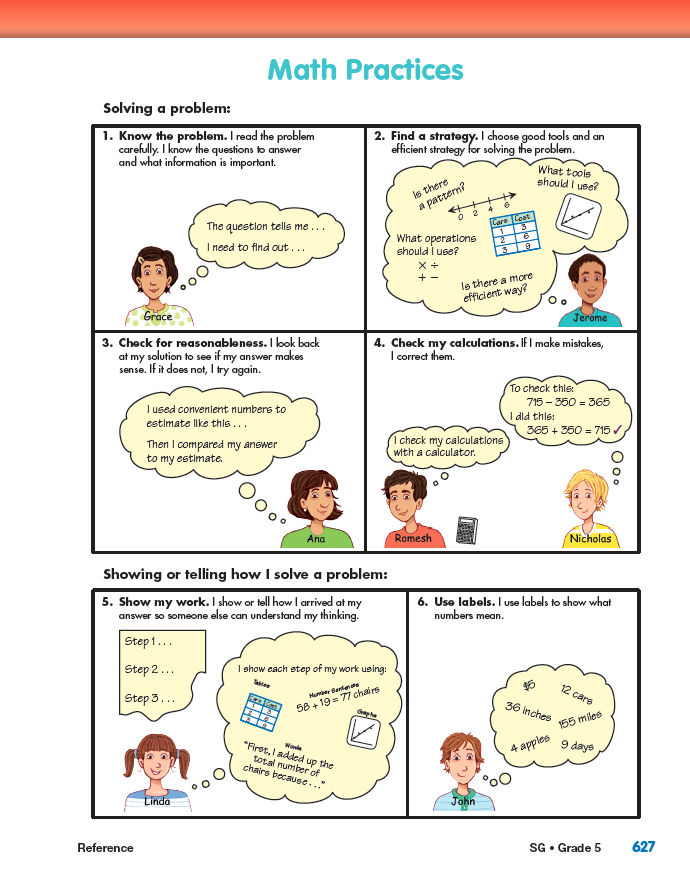Problem Solving with Area
Est. Class Sessions: 1–2Developing the Lesson
Solve Area Problems. Display the Area of Rectangles Master. Hide Rectangle WXYZ so students can focus their attention on Rectangle ABCD. Ask students to find the area and perimeter of the rectangle.
After students have had a few minutes to solve each problem, ask:
Show students Rectangle WXYZ and ask students to find the length of the rectangle.
Ask:
After this quick review, direct students to the Problem Solving with Area pages in the Student Guide. Ask students to complete Question 1.
Use these or similar prompts to discuss Question 1:
After completing Question 1 ask students to find the x2 key on their calculators. Students should be familiar with this key from previous lessons. Discuss Question 1–4. In Question 2, students are directed to practice using the x2 key to find the area of the two squares in Question 1. Check to make sure students understand how to use this key on their calculators before asking them to complete Question 3. In Question 3, students should use their calculators to find that the area of the square is 20.25 square centimeters. In Question 4, students are asked to find the perimeter of a square. Ask students to share their strategies for solving this problem.
Students use multiplication and division to solve multistep problems involving area in Questions 5–7. As students complete each step of a problem, encourage them to share their reasoning. In Question 5, students find the area of a rectangle composed of three squares by first finding the area of one of the squares. Ask several students to share their strategy for finding the area of the rectangle. Students should reason that if they know the length of one side of one of the three squares they can find the area of that square and then multiply it by 3 to find the area of the rectangle. Students can use this reasoning to answer Question 6 by first realizing that if the total area of the rectangle is 300 square centimeters, the area of one of the squares will be 1/3 of that or 300 square centimeters divided by three.
Upon completion ask:
Reason about Area. Questions 7–11 provide students with an opportunity to use what they have learned about area to solve problems. Students are asked to find the length of a side of a rectangle when given the total area and the length of one of the sides in Question 7.
After reading the question, ask:
In Questions 8–11, students need to read the information carefully to decide if it describes a possible rectangle or if it is “crazy.” If it is possible, they solve the problem, and if it is crazy, they use what they know about rectangles to explain why. Questions 8, 9, and 11 each describe a problem that is possible to solve. After reading Question 10, students should recognize that the measurements given are not possible for a rectangle because in a rectangle opposite sides are equal in length. There cannot be three different side lengths.
Solve Multistep Problems. Students work with a partner to complete Questions 12–15. These questions are multistep problems involving area. Before students begin work on these problems, direct them to the Math Practices page in the Student Guide Reference section or to the display of the Math Practices page. Ask student to look at the first Math Practice, Know the problem. Have students talk with a partner and identify what they need to “know” about a problem.
After a few minutes, ask:
As students work on Questions 12–15, circulate among the groups using these or similar questions to encourage students to share their problem solving strategies:
Questions 12–13 provide students with specific steps to help them solve the problem. For Question 14, students need to identify the steps they will take to find the total area of the shape. In Question 15, students evaluate the reasoning of another student's solution strategy.

















